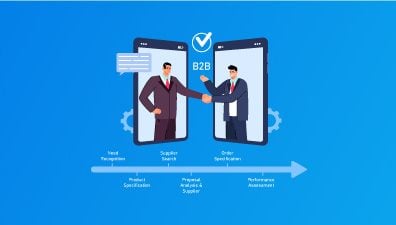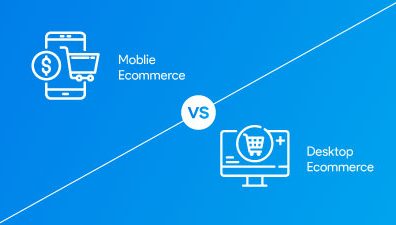Nowadays, businesses are turning to advanced architectural solutions to enhance their digital capabilities. This comprehensive guide looks into two such groundbreaking approaches: Headless Commerce vs Microservices. Each offers unique advantages and challenges, catering to different aspects of eCommerce. By exploring the core concepts, benefits, and practical differences between these architectures, we examine their flexibility, performance, and integration complexities. This aims to equip you with the knowledge to make an informed decision on the right architecture for your business, whether it’s Headless Commerce, Microservices, or their hybrid form.
Table of Contents
- A Brief Explanation of Headless Commerce vs Microservices
- Key Differences of Headless Commerce vs Microservices
- Advantages and Challenges to Consider When Choosing between Headless Commerce vs Microservices
- Use Cases and Suitability for Headless Commerce vs Microservices
- Successful Case Studies for Headless Commerce vs Microservices
- Considerations for Choosing the Right Architecture between Headless Commerce vs Microservices
- A Hybrid Approach: Headless Commerce Microservices
A Brief Explanation of Headless Commerce vs Microservices
Explanation and Benefits Headless Commerce
Explanation of Headless Architecture
Headless commerce represents a modern approach to eCommerce architecture, characterized by the separation of the front end from the back end. This architecture differs significantly from traditional eCommerce models, where the front end and back end are tightly interlinked. In a headless setup, the backend, which handles business logic, data processing, and management functions, is distinct and operates independently of the front end, the part of the store with which customers directly interact.
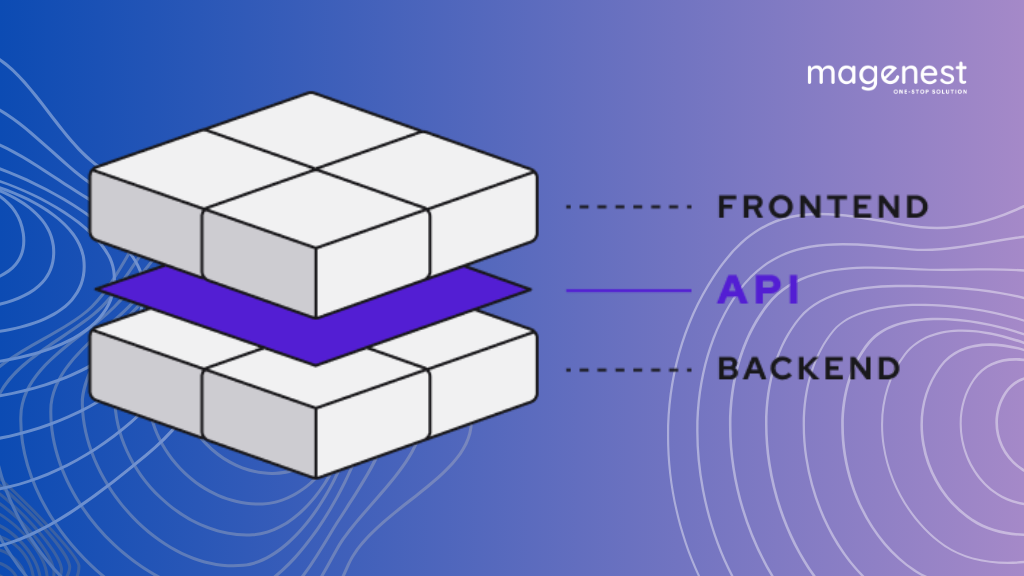
The key to this separation is the use of APIs (Application Programming Interfaces), enabling seamless communication between the front end and back end while allowing them to function independently. This structure offers significant flexibility, allowing businesses to use various frontend technologies to create unique customer experiences, without being constrained by the limitations of their eCommerce platform’s backend.
Benefits of Headless Architecture
The primary benefit of this separation is the ability to modify the front end without affecting backend operations. Traditional eCommerce setups often require corresponding backend adjustments for front-end changes, leading to inefficiency and constraints, especially when implementing innovative features or designs.
However, with headless commerce, the front end, whether a website or mobile app, communicates with the backend through API calls, allowing for independent development and modifications. This architecture not only facilitates the use of modern frontend technologies for creating personalized and dynamic user experiences but also enhances agility in adapting to market trends or integrating new technologies. For example, integrating new touchpoints like smart devices or kiosks becomes more manageable without needing to overhaul the entire eCommerce system.
Explanation and Benefits of Microservices
Explanation of Microservices
Microservices in eCommerce represent a modern architectural approach where the entire application is divided into smaller, independent services. Each service in this architecture is dedicated to a specific business function, such as inventory management, payment processing, or user authentication. This method contrasts sharply with traditional monolithic architectures, where all functionalities are integrated into a single, often cumbersome application. In a monolithic framework, any modification impacts the entire system, limiting flexibility and complicating management.
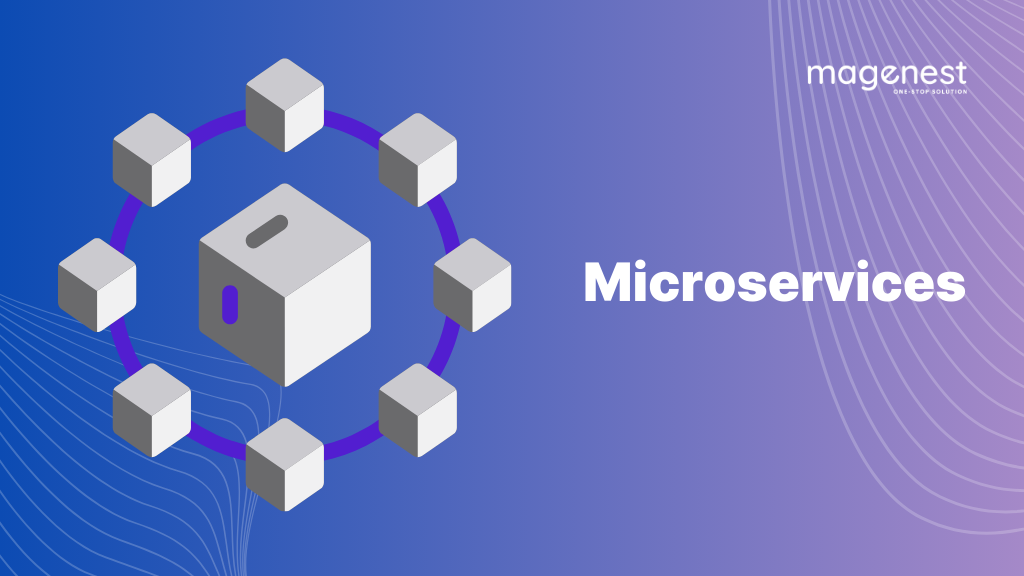
The decomposition of an eCommerce platform into microservices allows for the independent management, updating, and scaling of each service. This modular structure enables more efficient and focused development and maintenance. For example, alterations in the payment processing service do not require changes in other areas like the product catalog or user accounts.
Benefits of Microservices
Each service in a microservices architecture operates autonomously. They are developed, deployed, and managed separately, communicating with one another through well-defined APIs. This independence brings several advantages. It enhances scalability, as each service can be individually adjusted to meet demand. During peak shopping periods, services like inventory and order processing can be scaled up independently of the rest of the system.
Furthermore, this architectural style allows for the use of different technology stacks tailored to the specific needs of each service. A service demanding high performance might utilize a different programming language or database system than one where performance is less critical. The independent nature of microservices also ensures that the failure of one does not compromise the entire system, bolstering the platform’s overall resilience and reliability. If a single microservice encounters an issue, it can be addressed without causing significant downtime for the entire eCommerce platform.
Key Differences of Headless Commerce vs Microservices
Flexibility and Customization
The key differences between Headless Commerce vs Microservices in terms of flexibility and customization lie in their respective focuses on frontend and backend aspects of an eCommerce platform. Headless commerce enhances frontend flexibility, allowing businesses to use any frontend technology to design their user interfaces.
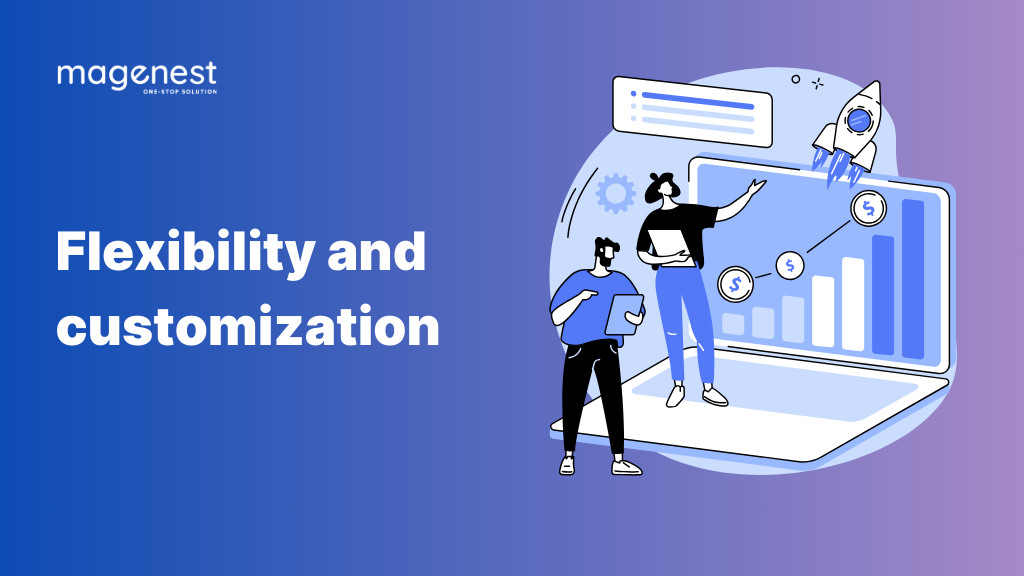
This separation from the backend means the visual and interactive elements of the eCommerce experience can be customized extensively, without being limited by backend capabilities. The use of APIs facilitates this flexibility, enabling rapid changes and innovations in the front end. This approach is particularly effective in creating unique, engaging user experiences across various devices and channels, as it allows for a high degree of freedom in how content and products are presented to customers.
On the other hand, Microservices architecture offers significant customization capabilities in the backend operations of an eCommerce platform. Each microservice is an independent component responsible for a specific piece of business functionality, like inventory or payment systems.
This independence allows for the development, deployment, and scaling of each service on its own, enabling businesses to choose the most suitable technology stack for each microservice’s needs. This leads to a more tailored and agile backend, where changes or upgrades to individual aspects of the system, such as payment processing or inventory management, can be made independently without affecting the entire platform.
Performance and Scalability
In the context of performance and scalability, both headless commerce vs microservices architectures offer distinct advantages tailored to different aspects of an eCommerce platform. Headless commerce enhances scalability through its separation of the front end and back end. This architecture allows businesses to evolve their customer-facing interfaces independently of the backend, enabling them to efficiently accommodate growth in customer traffic and changes in market trends.
The flexibility afforded by the use of APIs in headless commerce is key here, allowing for seamless integration and scaling of new features or technologies on the front end. This approach ensures that resources can be strategically allocated, especially to the front end during high-demand periods, without overburdening the back end, thereby maintaining smooth customer experiences.
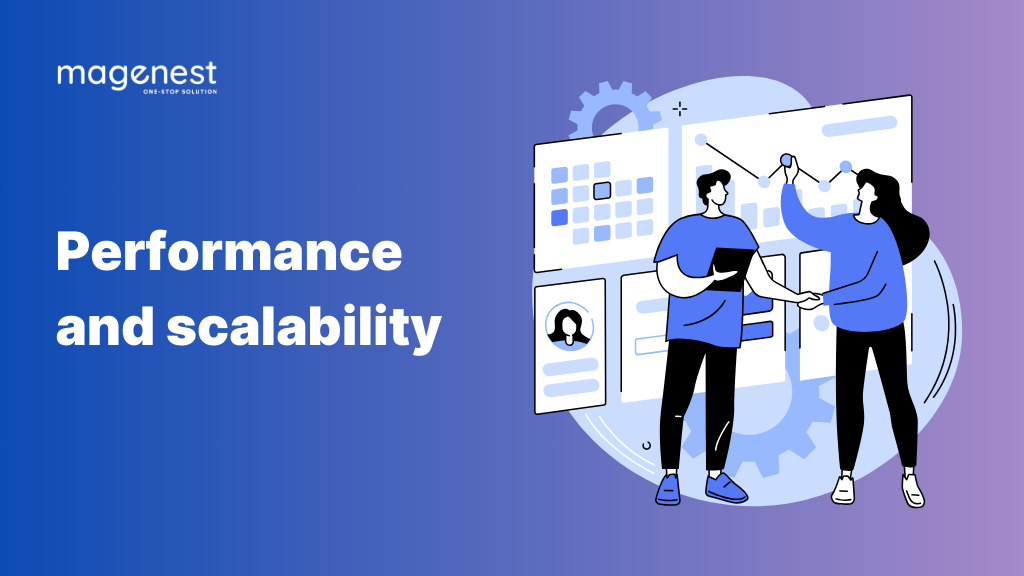
On the other hand, microservices architecture significantly impacts the performance and scalability of the backend of an eCommerce platform. By dividing the application into smaller, independent services, each microservice can be optimized for its specific function, leading to enhanced overall performance.
The distributed nature of these services also adds resilience to the system; issues in one microservice do not affect the entire platform, preventing widespread performance bottlenecks. Scalability is a hallmark of this approach, as each service can be independently scaled based on demand. This is particularly beneficial in eCommerce, where different services may experience variable loads at different times, allowing for more efficient and responsive scaling.
Development Speed and Agility
Headless commerce vs microservices architectures both significantly enhance development speed and agility in eCommerce, albeit in different aspects of the development process.
Headless architecture greatly accelerates the development of the front end. This is achieved by decoupling the frontend from the backend, enabling frontend and backend developers to work in parallel without interference. This independent workflow dramatically reduces the overall development time.
The use of APIs in headless commerce further speeds up this process, as they allow frontend developers to quickly integrate new features and adapt to changing market demands without backend modifications. The technology-agnostic nature of the headless approach also contributes to this speed, as it lets developers utilize the most efficient and appropriate tools for front-end development, fostering rapid innovation and responsiveness in creating user interfaces.
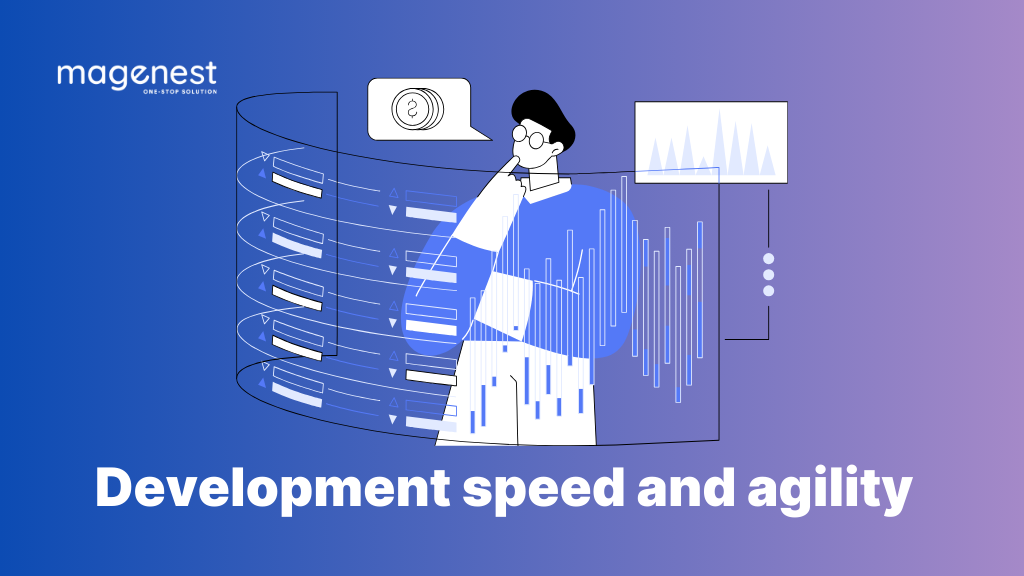
In contrast, microservices architecture boosts development agility in the backend. The key to this agility is its modular structure, where each microservice is an independent unit focused on a specific business function. This modularity allows for quicker iterations and more frequent releases, as teams can develop, test, and deploy each microservice independently.
The ability to use different technology stacks for different microservices adds to this agility, enabling teams to select the most effective tools for each service. This flexibility is particularly advantageous when updating or replacing technologies, as only the affected microservice needs to be updated, rather than the entire application.
Integration and Complexity
Headless commerce vs microservices architectures, while offering significant benefits in terms of flexibility and scalability, also bring distinct integration and complexity challenges that need careful management. In headless commerce, the primary integration challenge arises from the separation of the front end and back end.
This architecture requires robust and secure APIs to ensure seamless communication between these layers, especially when dealing with multiple frontends such as websites, mobile apps, and IoT devices. The integration becomes more complex with the need to incorporate third-party services like payment gateways, CRM systems, and marketing tools. Each integration needs meticulous planning and execution to work smoothly with both the frontend and backend components, necessitating a well-thought-out API strategy and sometimes the development of custom APIs.
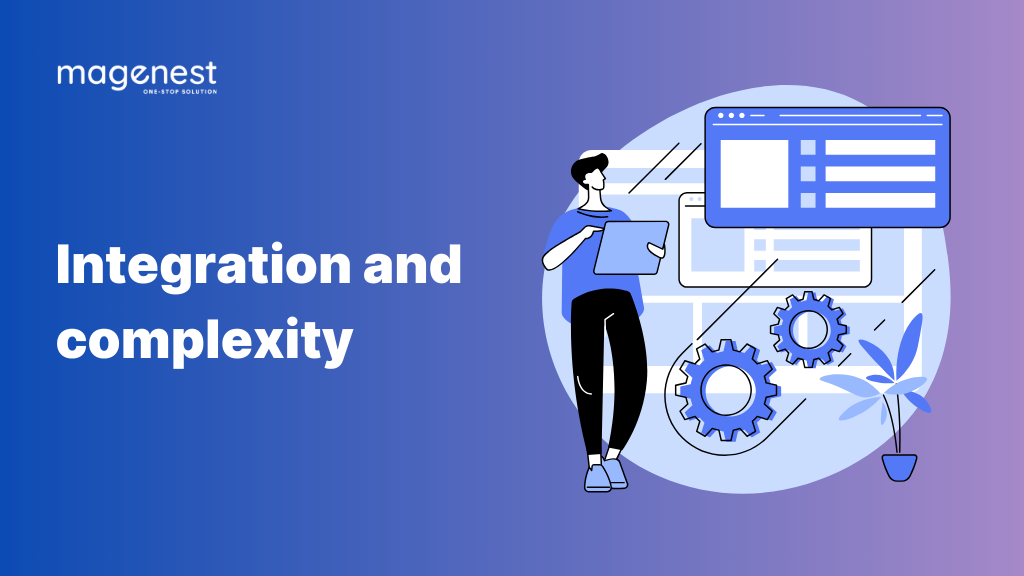
Conversely, the microservices architecture introduces complexity in system management due to the presence of numerous independently functioning services. The key challenge lies in maintaining consistent communication and data exchange between these microservices, often managed through service meshes or API gateways.
Ensuring system resilience and handling service failures are also critical, as the failure of one microservice should not lead to a system-wide breakdown. This necessitates implementing fallback mechanisms and redundancy. Furthermore, microservices require sophisticated deployment and monitoring techniques, such as continuous integration and continuous delivery (CI/CD) pipelines, and more complex monitoring and logging systems to efficiently manage the distributed nature of the services.
Advantages and Challenges to Consider When Choosing between Headless Commerce vs Microservices
When considering the integration of headless commerce vs microservices into your digital architecture, it’s important to understand their distinct advantages:
Advantages of Headless Commerce
Headless commerce offers a separate presentation layer, providing flexibility in building the front end independent of legacy front-end technologies tied to monolithic systems. This separation enables enhanced omnichannel capabilities, allowing for a broader approach to omnichannel sales and enabling marketing teams to implement website changes without needing developer assistance.
One of the key benefits is the improved customer experience; control over the presentation layer allows for enhanced personalization in the online store, directly translating into increased conversions and revenue. Headless commerce also boasts fast loading times, crucial for SEO, user experience, and conversion rates. Additionally, it offers a competitive edge in the e-commerce market by providing agility and flexibility, enabling the integration of best-of-breed solutions, and facilitating unlimited scalability.
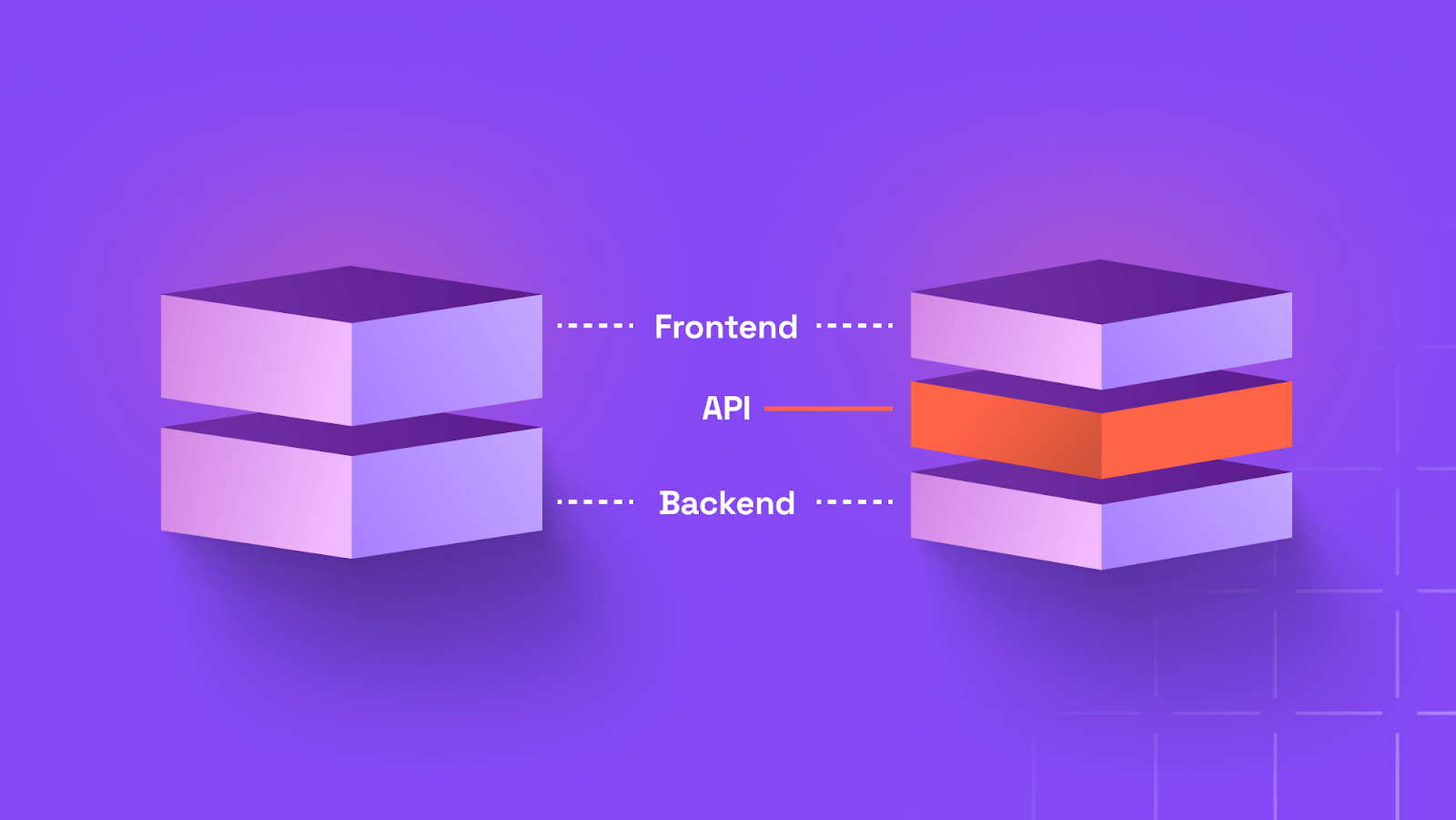
Additional benefits include a shorter time-to-market as features can be added and tested independently without impacting the entire system. Bugs can be fixed in isolation, ensuring system integrity. This architecture also allows for independent development, deployment, and scaling of services by different teams, simplifying the onboarding process for new developers due to the division of the system into distinct parts.
Advantages of Microservices
Microservices architecture is particularly beneficial for applications experiencing significant fluctuations in demand, providing a high degree of scalability through its modular nature. This architecture facilitates sophisticated component segmentation, which is advantageous for complex application structures. However, it requires more resources for effective implementation and management, making it a suitable choice for organizations that can allocate such resources.
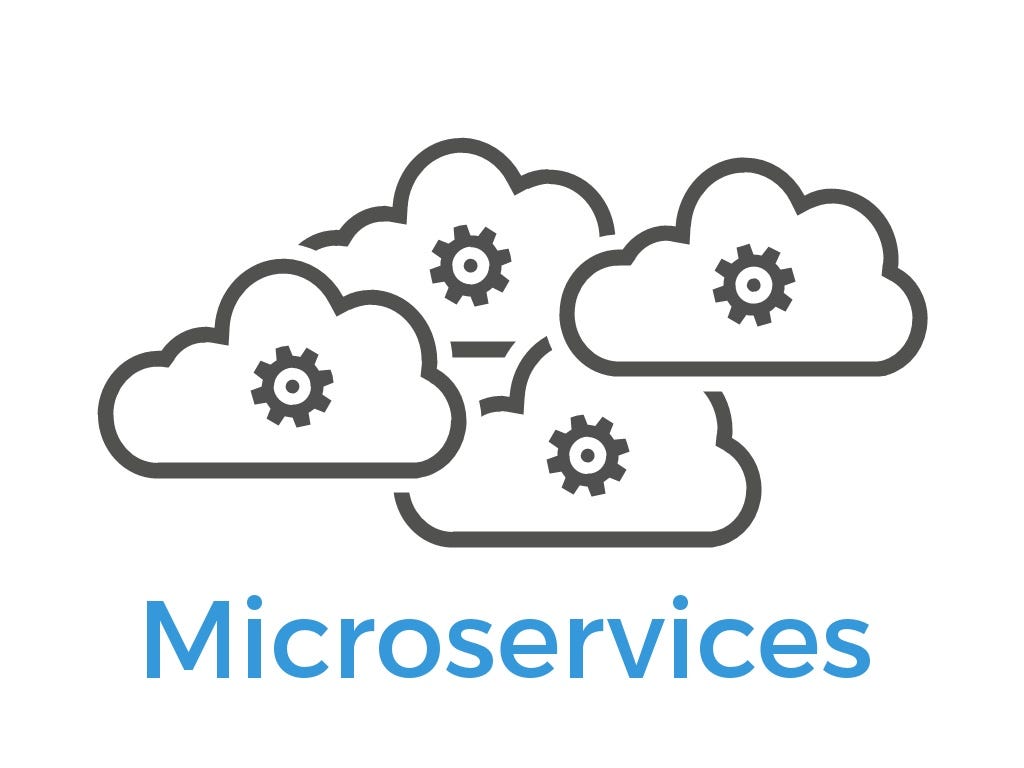
In choosing between headless and microservices architectures, consider the specific needs of your application in terms of modularity and scalability. Headless architecture is ideal for applications requiring a clear separation of front and backend but not frequent scaling.
On the other hand, microservices offer greater complexity and flexibility, suitable for dynamic applications that demand extensive and regular scaling. The decision should also take into account the resources available to your organization, as headless applications are generally simpler to implement and manage compared to the more resource-intensive microservices.
Challenges in Implementing Headless Commerce vs Microservices
Choosing a pathway of combining headless commerce vs microservices involves considering several challenges, particularly when transitioning from a traditional monolithic architecture.
- Analysis and Planning Costs: Transitioning requires a thorough analysis to define microservices’ boundaries and dependencies. This involves architectural review and functionality mapping, demanding time and expertise. More than that, fully decoupled microservices architectures can be expensive. Therefore, some brands may opt for headless solutions as a more cost-effective alternative.
- Development and Refactoring Efforts: Breaking down a monolithic system into microservices or adopting a headless approach requires extensive refactoring. This process can be complex, labor-intensive, and time-consuming.
- Infrastructure and Deployment Requirements: Microservices necessitate advanced infrastructure, with each service potentially requiring its environment. This includes monitoring, logging, and scalability mechanisms, leading to additional costs. Headless commerce offers more flexibility with fewer infrastructural changes.
- Testing and Quality Assurance Complexity: In a microservices architecture, testing becomes more intricate. Each service must be tested individually and in combination with others, adding to the complexity and cost.
- Increased Operational Complexity: Managing a microservices architecture involves greater complexity compared to a monolithic system, especially in monitoring, logging, and troubleshooting as the number of services increases. More than that, it often requires organizational restructuring with cross-functional teams. In contrast, headless commerce may not demand such extensive changes.
- Skill Set and Learning Curve: Adopting microservices demands a shift in skills and mindset for the development team. This might necessitate training, hiring specialized personnel, or consulting with external experts.
Use Cases and Suitability for Headless Commerce vs Microservices
Understanding the best use cases and suitability for headless commerce vs microservices is crucial in making an informed decision for eCommerce solutions.
Scenarios Where Headless Commerce Excels
- Omnichannel Strategy Implementation: Headless commerce is ideal for businesses aiming to provide a seamless customer experience across multiple channels (web, mobile, social media, IoT devices, etc.). It allows for consistent content and functionality deployment across various platforms.
- Rapid Adaptation to Market Trends: Companies needing to quickly adapt their front-end user experiences to changing market trends without overhauling their entire backend system will benefit from headless commerce. It provides flexibility to update the UI/UX without impacting the backend processes.
- Customized User Experiences: Brands focused on delivering highly personalized and unique user experiences can leverage headless commerce to create custom front-ends tailored to specific customer segments or marketing strategies.
- High-Performance Websites: Businesses that prioritize website performance, particularly in terms of speed and agility, will find headless commerce advantageous. It allows for the creation of fast-loading, responsive websites that enhance user experience and SEO.
- Integration with Existing Systems: For organizations that want to integrate their eCommerce platform with existing content management systems (CMS), Customer Relationship Management (CRM) tools, or other third-party applications, headless commerce provides the necessary flexibility for seamless integration.
When to Consider Microservices for eCommerce
- Scalability Needs: Businesses experiencing or anticipating rapid growth, fluctuating demands, or global expansion should consider microservices. This architecture can effortlessly scale up or down individual components without affecting the entire system.
- Complex and Diverse Product Catalogs: Companies with extensive, complex, and constantly evolving product catalogs will find microservices architecture suitable. It allows for easier management and updating of product information across different services.
- Frequent Updates and Continuous Deployment: Microservices are ideal for eCommerce platforms that require frequent updates, continuous development, and deployment. This architecture supports agile development practices, enabling quick and independent deployment of new features.
- High Resilience and Availability Requirements: For businesses where high availability and resilience are critical, microservices provide the advantage of isolating failures. If one service fails, it doesn’t bring down the entire system, ensuring continuous operation.
- Diverse Technology Stacks: Organizations preferring to use different technology stacks across various components of their eCommerce platform will benefit from microservices. It allows each service to be built with the most suitable technology.
- Decentralized Team Structures: Companies with distributed or decentralized development teams can manage projects more effectively with a microservices architecture, as each team can focus on specific services independently.
Successful Case Studies for Headless Commerce vs Microservices
Real-world Examples of Companies Using Headless Commerce
SM Market
The implementation of headless commerce at SM Market, using Magento, led to significant improvements in their online retail operations. With the help of Magenest, this transformation included the development of a mobile app for efficient stock management, a new user interface optimized for grocery shopping, and an affiliate pickup system. These upgrades streamlined operations improved the customer experience and provided a unified shopping experience across different platforms.
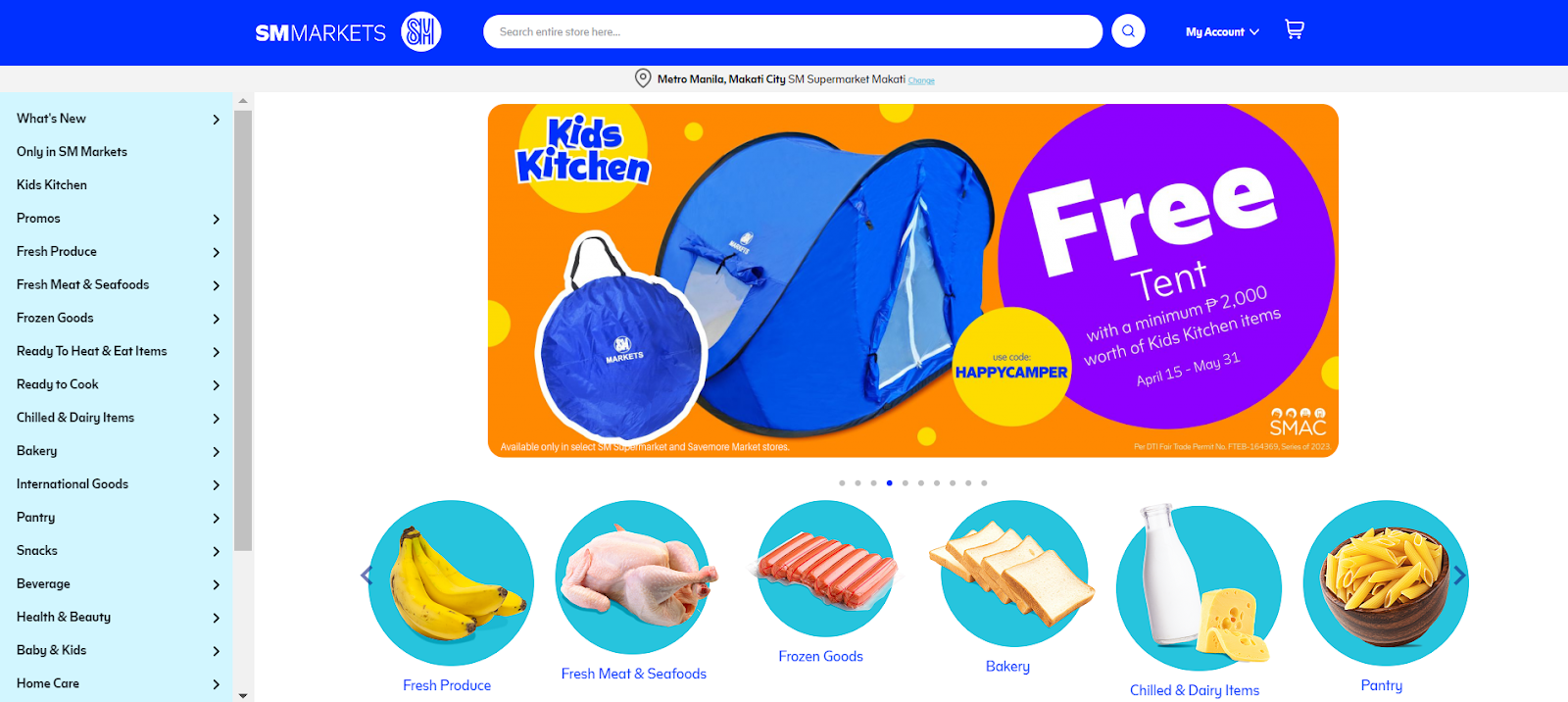
The results of adopting headless commerce were remarkable for the SM Market. The revamped system and website enhancements resulted in a substantial increase in customer satisfaction, order fulfillment efficiency, and a notable growth in the number of orders and overall revenue. This case study demonstrates the transformative impact of headless commerce in the retail sector, highlighting its potential to revolutionize business operations and drive growth.
K2 Sports
Being a major player in the global outdoor brands market, K2 Sports successfully implemented Headless Commerce to address limitations they faced with their demand. The primary challenges included inadequate APIs and high costs impeding their international expansion. By shifting to a headless commerce setup with a Software as a Service (SaaS) model, K2 Sports achieved remarkable improvements.
They adopted BigCommerce for their robust backend infrastructure, enhancing API performance and speed. This move enabled K2 to deliver innovative shopping experiences and substantially reduced ownership costs. Additionally, they utilized Contentstack as their frontend content management system, allowing them to craft tailored content experiences for diverse audiences, significantly boosting user engagement.

The impact of moving to headless commerce was profound for K2 Sports. They managed to launch eight brands and sixteen websites within a mere nine months, demonstrating the scalability and efficiency of the headless commerce model. The switch to Contentstack facilitated a 90% increase in content publication speed and streamlined site development by 75%, reducing dependencies on development teams.
Overall, K2 Sports witnessed a 50% increase in productivity, as per a case study with Contentstack. This success story of K2 Sports using Headless Commerce showcases the transformative power of this technology in the B2C sector, allowing brands to rapidly innovate, efficiently deliver content, and achieve remarkable operational efficiency and market expansion.
Success Stories of Businesses Adopting Microservices for eCommerce
Netflix
Netflix, a leading streaming service, exemplifies a significant success story in adopting microservices architecture, particularly in the realm of eCommerce. The company faced severe challenges with its monolithic architecture, experiencing service outages and scaling issues, especially evident when its legacy DVD-shipping service was disrupted for three days in 2008.
Recognizing the need for a more robust and scalable system, Netflix began transitioning to a microservices-based architecture in 2009. This shift, primarily facilitated by Amazon Web Services (AWS), involved migrating non-customer-facing services initially, followed by customer-facing systems. By 2012, the transition was complete, enabling Netflix to manage a staggering number of API edge case requests (two billion daily by 2013) across hundreds of microservices (over 700 by 2017).

This strategic move to microservices not only resolved Netflix’s scalability and service outage issues but also brought substantial cost reductions and operational efficiencies. By decentralizing their systems and adopting horizontally scalable, distributed systems in the cloud, Netflix significantly improved their service reliability and performance.
This architectural overhaul underpinned their rapid growth in the streaming industry, leading to an impressive annual revenue of around $8 billion, streaming six billion hours of content weekly to over 220 million subscribers globally. Moreover, Netflix’s innovative approach to microservices has been instrumental in reshaping the landscape of television consumption, pioneering the streaming wars and leading to a more segmented and specialized content delivery model in the digital era.
Uber
Uber’s remarkable transformation into a microservices architecture is a pivotal example of how this technology can drive business success, especially in the eCommerce sector. Initially, Uber’s growth was severely hindered by its monolithic structure, which made it difficult to fix bugs, develop new services, or expand globally. The system was complex and required extensive developer experience for even minor modifications.
Recognizing the need for change, Uber began deconstructing its monolithic system into more manageable microservices, such as passenger and trip management, connected through an API gateway. This strategic shift enabled individual development teams to concentrate on specific features, significantly reducing the time for new feature implementation, improving quality, and simplifying management. It also enhanced the system’s resilience, allowing for isolated work on components without affecting the overall network.

However, Uber’s journey to microservices was not without challenges. Initially, the lack of standards led to a chaotic microservice architecture. Susan Fowler, a reliability engineer at Uber, highlighted the issues with managing thousands of microservices, some of which were outdated or unused. Addressing this, Uber implemented global standards for microservices, focusing on key metrics like fault tolerance, performance, and scalability.
This approach helped in establishing a more coherent and robust framework, making the network less brittle and more adaptable to changes. The successful transition to microservices at Uber stands as a testament to the viability and benefits of this architecture, demonstrating how it can facilitate rapid innovation, operational efficiency, and scalability in the competitive world of eCommerce.
Considerations for Choosing the Right Architecture between Headless Commerce vs Microservices
When deciding between Headless Commerce vs Microservices architectures, businesses must carefully consider several factors to determine the right choice for their specific needs:
- Evaluating Business Goals and Requirements: The choice between Headless Commerce vs Microservices depends heavily on the company’s specific business goals and requirements. For businesses focused on providing a unique and flexible user experience across multiple channels, Headless Commerce might be more suitable as it separates the frontend presentation layer from the backend business logic. On the other hand, companies looking for high scalability, independent deployment of services, and ease of adding new features may find Microservices architecture more fitting.
- Assessing Technical Expertise and Resources: The implementation of either architecture requires a certain level of technical expertise. Headless Commerce requires skills in both frontend and backend development, as well as an understanding of how to integrate various systems. Microservices architecture, meanwhile, demands expertise in complex distributed systems, continuous integration, and deployment (CI/CD), and cloud computing. Assessing the current technical capabilities and resources of the team is crucial in making an informed decision.
- Budget and Cost Considerations: Budget constraints play a critical role in the decision-making process. Headless Commerce can be more cost-effective for businesses that already have a robust backend system in place and only require frontend changes to enhance the customer experience. Microservices, while offering greater flexibility and scalability, can involve higher initial development and maintenance costs due to the complexity of managing multiple services.
- Future Scalability and Growth Plans: The scalability and future growth of the business are key considerations. Microservices architecture excels in scenarios requiring high scalability, as it allows for the independent scaling of each service. However, if the business anticipates moderate growth or has specific channel-focused strategies, Headless Commerce might be sufficient and more straightforward to manage.
- Compatibility: Assess the compatibility of each architecture with your existing systems and technologies. Headless commerce might be easier to integrate with your current setup if you already have a robust backend system but seek to improve the customer-facing experience. Microservices require a more fundamental shift in how your system is structured, which might necessitate significant changes to existing workflows and technologies.
A Hybrid Approach: Headless Commerce Microservices
Headless Commerce Microservices architecture represents a modern approach in eCommerce, where the front-end (user interface) and back-end (server-side) of a platform are decoupled. This allows for greater flexibility and efficiency in the development and management of eCommerce systems. In this architecture, each microservice focuses on a specific function, such as product catalog management or order processing.
The modular nature of this system enables businesses to update or modify individual components without disrupting the entire platform. Key benefits include enhanced scalability, as each microservice can be independently scaled, improved performance through specialized optimization of each service, and increased security, as failure in one microservice does not compromise the entire system.
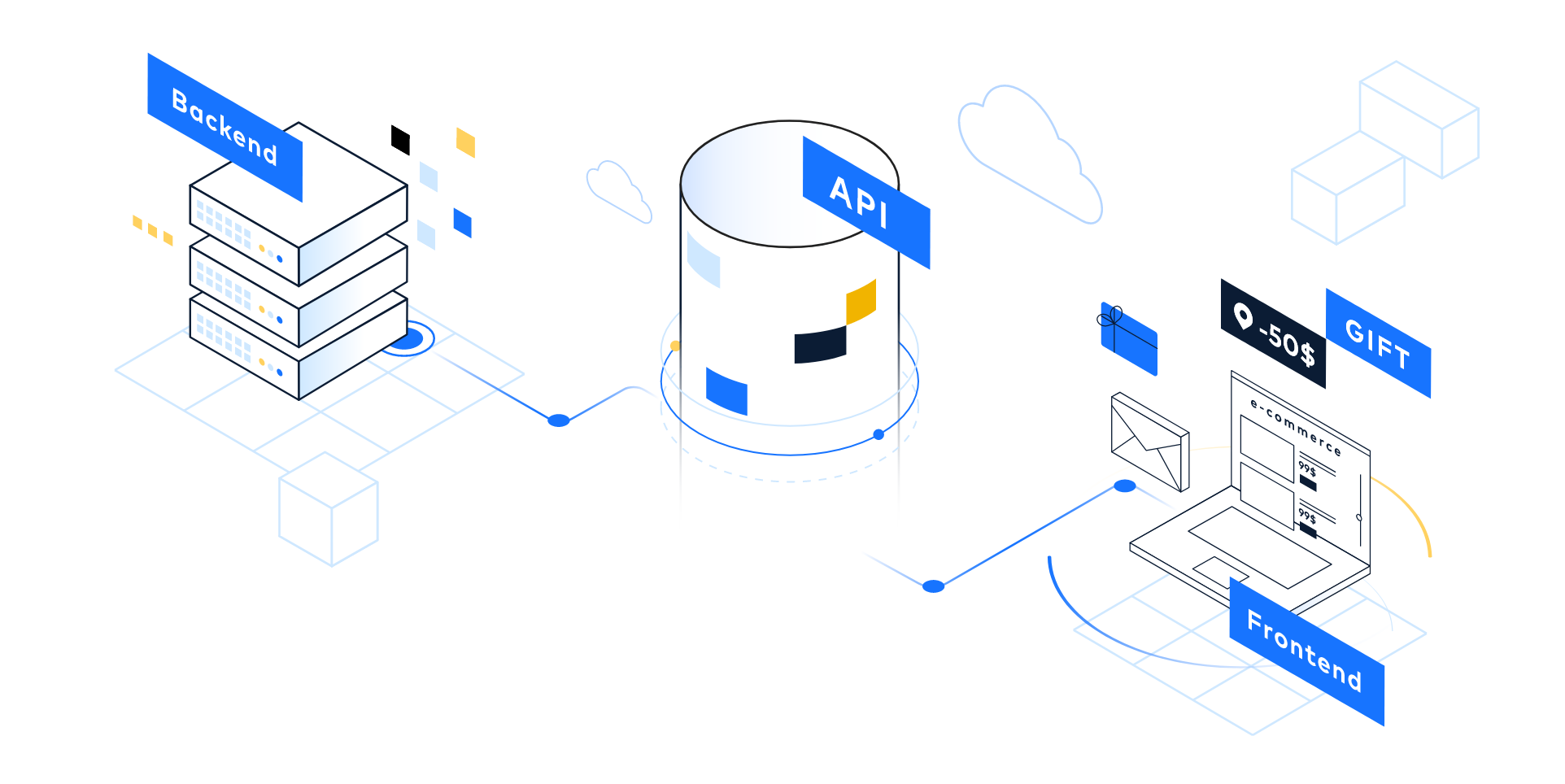
However, Headless Commerce Microservices also present certain challenges and considerations for the future. A notable challenge is the lack of an overarching view of the customer journey, as each microservice operates independently. Identifying the responsible microservice for specific functionalities can be complex, and scaling the architecture requires careful management to ensure each service scales effectively.
Despite these challenges, the prospects for Headless Commerce Microservices are promising. This architecture aligns well with the trend towards more flexible, easily deployable microservices, offering businesses increased adaptability in designing and enhancing their eCommerce platforms. The potential for improved performance and scalability further underscores the growing relevance and future potential of this approach in the dynamic world of eCommerce.
Conclusion
Navigating through the realms of Headless Commerce vs Microservices reveals a landscape rich in potential for eCommerce innovation. We have seen how each architecture offers distinct advantages, from the customization and flexibility of Headless Commerce to the scalability and efficiency of Microservices.
As the digital commerce arena continues to evolve, the hybrid approach of Headless Commerce Microservices emerges as a compelling solution, blending the best of both worlds. This guide aims to serve as a beacon for businesses charting their course through the complexities of eCommerce architecture, helping to identify the most suitable approach for their unique needs and aspirations in the digital marketplace.
If you find our content helpful, please consider subscribing to our newsletter right below so that you won’t miss any valuable updates from Magenest.


